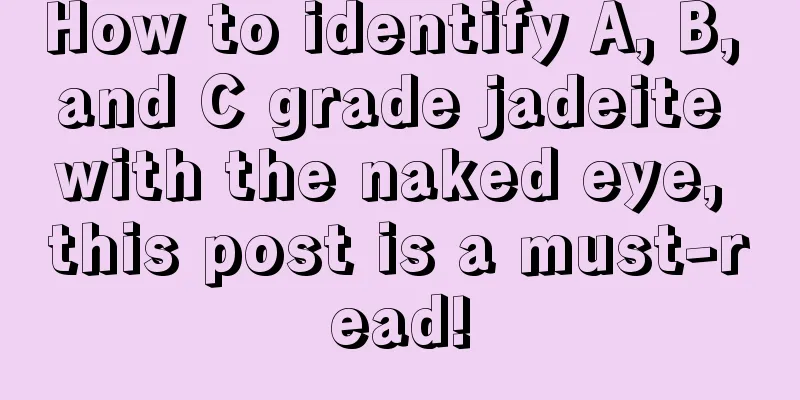How to identify A, B, and C grade jadeite with the naked eye, this post is a must-read!

|
There are fakes of famous paintings and counterfeits of ancient jade! It can be seen from this that counterfeiting is not exclusive to the jade industry, it is a pain in the hearts of all consumers and collectors! However, even though the jade market has not yet been fully regulated and fake jade is emerging in an endless stream, it still cannot stop jade lovers from buying it! How to improve your eyesight is imperative... 1. "Cellulite lines" VS "acid etching lines". This point is one of the most important bases for identifying B-grade jadeite. When purchasing jade, any jade lover with a little experience will carefully check the surface of the jade to see if there are any bumps on the surface of the finished jade, which is called the "orange peel effect". The coarser the particles inside the jade, the more obvious the orange peel effect. On the contrary, if it is B-grade jadeite, the surface will show a mesh structure left after acid washing, which is called "acid etching pattern". 2. Internal structure Natural A-grade jadeite presents a mosaic structure of granular and fibrous minerals; on the contrary, after acid washing and glue injection, the boundaries of the granular crystals are rounded and the boundaries between the grains become blurred. 3. Color status The color of natural A-grade jade is unevenly distributed and spreads outward from the color root; while the color root of B-grade jade is not obvious, the color is clear, and the boundary is blurred, giving people a feeling that the color is "drifting"; the color of C-grade jade seems to "float" on the surface of the jade. If you observe it with a magnifying glass, you will find that the color is concentrated at the edge of the mineral particles, there is no color root, and the tone is unnatural. 4. Impurity content Natural A-grade jadeite will contain impurities to a greater or lesser extent, such as stone flowers, secondary colors, etc.; while jadeite that has been acid-washed is pure in color and free of impurities. Of course, we cannot deny that there are counterfeiters who, in order to deceive consumers, inject colors and impurities into the glue. 5 Emerald Luster Natural A-grade jadeite displays a glassy luster; however, B-grade jadeite has been injected with glue, so it displays a waxy glassy luster, which is weaker than that of A-grade jadeite. fcgc66 fcpf18 |
Recommend
Back cover or no back cover? How good is inlaid jade?
Many people will find that most jades have a &quo...
It turns out that there is such a method in jade carving
In jade carving, There are many carving technique...
Discussing the cultural connotation and benefits of wearing jadeite
People who love jade must wear jade. In order to ...
Cleaning and maintenance of jade peace buckle
The jade peace locket, also known as Huaigu, is a...
There are many types of jadeite. Let us teach you how to recognize the types of jadeite.
Everyone knows that there are many types of jade,...
If you don’t know these points when investing in and collecting jadeite, you’ll just lose money!
Nowadays, more and more people like to invest in ...
What should you pay attention to when buying jadeite raw stone?
When buying jadeite raw stones, novices are alway...
How to identify whether a jade merchant is reliable? Spend less money
For jade novices, the priority to learn is not th...
Jade Carver's Reference - 5 "37 Laws" of Jade Carving
If jade is not carved, it cannot become a useful ...
The water in this industry is not very deep, it’s just relativity!
It is said that the jade industry is very complic...
Simple but not simplistic, this jade pendant is worth millions, and both the carving and the materials are perfect.
There is a saying in the jade industry, "Goo...
Summary of the common meanings of jade pendants! Let’s see how many types you know?
Many Chinese people love jade. Jade is no longer ...
Jade appreciation brings the sleeping "stone" back to life!
Jade is a beautiful jade that has been sleeping f...
How to choose a high-quality jade ring for men?
Jade has been a symbol of identity and status in ...
What factors should be considered when choosing a jade necklace? How to choose a jade necklace?
Nowadays, as the popularity of jade continues to ...









